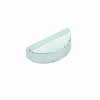SIVAllan
Gold Level Sponsor
I finished reading Bill Carroll's Ford Cobra Guide (1964 Sports Car Press). Toward the end, an interview with Ken Miles is presented with Miles discussing a few tricks of the trade in tuning engines.
Specifically he mentions moving the torque curve up or down by changing the timing and valve lash.
He also mentions that this won't necessarily make a big difference but it made me wonder about tuning our v6 engines. A small positive change can make a difference in both performance and overall satisfaction with the engine.
So this is deep water to me but I thought to ask - has anyone experimented with v6 timing and valve lash purposefully to seek performance gain?
What - how much - gain was achieved?
If my cam makes most torque too high for my preferences - can any substantial movement down the curve be achieved by experimenting with valve lash and timing?
How much movement could be expected?
Thanks in advance,
Specifically he mentions moving the torque curve up or down by changing the timing and valve lash.
He also mentions that this won't necessarily make a big difference but it made me wonder about tuning our v6 engines. A small positive change can make a difference in both performance and overall satisfaction with the engine.
So this is deep water to me but I thought to ask - has anyone experimented with v6 timing and valve lash purposefully to seek performance gain?
What - how much - gain was achieved?
If my cam makes most torque too high for my preferences - can any substantial movement down the curve be achieved by experimenting with valve lash and timing?
How much movement could be expected?
Thanks in advance,


